How can we, as early childhood educators, help children of all ages regularly self-reflect and therefore contribute to their ongoing learning?
How can we gain insight into what is important to them on a regular basis?
You might be surprised at just how simple AND rewarding this process can be for children in your care.
One of the best things about working as an early childhood educator with young children of different ages is getting to see children come to know themselves better as they progress on their unique learning journey.
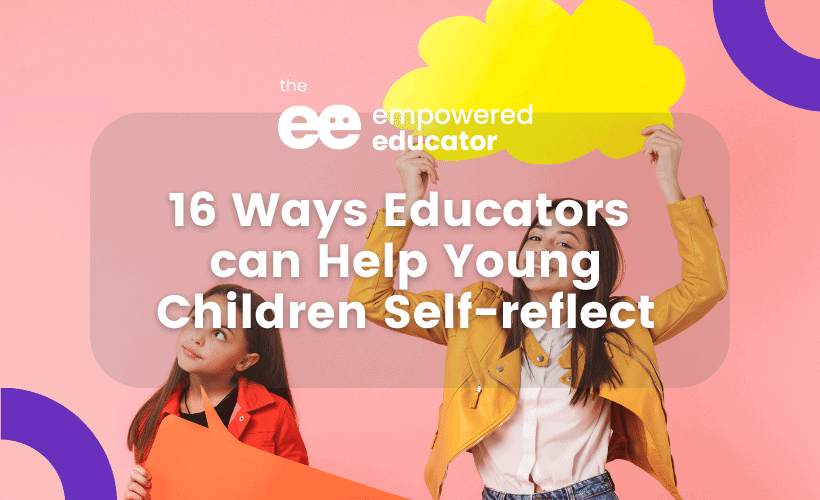
However, this is a learned skill - not an automatic action that we all do... and therefore, it is our task as educators and adults in our children’s lives to think of ways we can extend a child’s capacity for self-reflection.
Self-reflection simply means the ability to know, think, and talk about yourself as a person and a learner and we already do this as educators in our own work - our program, our day to day routines, our observations, our conversations, our professional development, our challenging moments (You can read more about critical reflection for educators here).
Why is it important for children’s learning to self reflect?
We know it is a necessary part of an educator’s job to engage in self-reflection but it is just as important that we provide similar opportunities for children to also self reflect. We want them to feel confident to ask questions, think about how they really feel, review the actions they take and how their behaviour affects others. We need to find ways to reflect WITH children and invite their voices and unique perspective rather than just relying on our own reflections and analysis of learning to inform our forward planning and quality improvement goals.

“We need to find ways to reflect with children and invite their voices and unique perspective rather than just relying on our own reflections and analysis of learning to inform our forward planning and quality improvement goals.”
Jodie Clarke - The Empowered Educator
The children’s perspectives and voices might simply reaffirm what you already thought but there is always room for them to surprise us too and you will never find that out if you don’t ask... so no, it is never a waste of time - it just comes down to HOW you do it rather than getting stuck in a rut of asking the same few questions everyday and ticking off your boxes- if the questions bore you I’m pretty confident they aren’t filling the children with the enthusiasm to participate either!
You might like to break it down a little and think of self-reflection as just another way children can contribute to their ongoing growth and change. This isn’t always an easy process or activity for many children though and some need a helping hand to engage in the process and connect with it in a way that makes sense to them so that it becomes a fun learning habit. And that’s where your knowledge of the children in your care, their personalities, their developmental level, their family culture, their interests, their struggles all comes into play... and your planning!
How can educators make self-reflection interesting for young children?
There is no doubt that reflection helps children to recognise their challenges and also their strengths but how do we make it interesting and ongoing for the children and also incorporate it into our own planning?
I’m going to give you the strategies to try in this article so keep reading! Below you will find 16 ways you can help young children to self reflect and feel empowered as learners and thinkers. There are of course more but I’ve tried to include some simple ideas for a range of ages and early years roles.
Ready to gain some new ideas for your empowered educator toolbox? Grab your drink of choice, get comfy and let’s do this!
16 Activity Ideas to Help Children Self-reflect & Feel Empowered in Their Learning
1. Powerpoint Slideshows
If you work with older children this could become a weekly group project from start to finish but if you work with children under 4 then you will probably need to put the actual slideshow together yourself first.
Using Powerpoint or a similar program, create a few simple slides that show photos of children participating in a range of activities and experiences across the week.
When you have your slideshow ready to go – try not to make it longer than 3-5 minutes or you will lose the children’s interest, press play and initiate a conversation asking open-ended questions like some of the examples below.
Use the children’s answers and reflections to inform next week’s program. You could also choose to do this as a daily activity if you had the time and children who only attend one of 2 days a week so no one misses out.
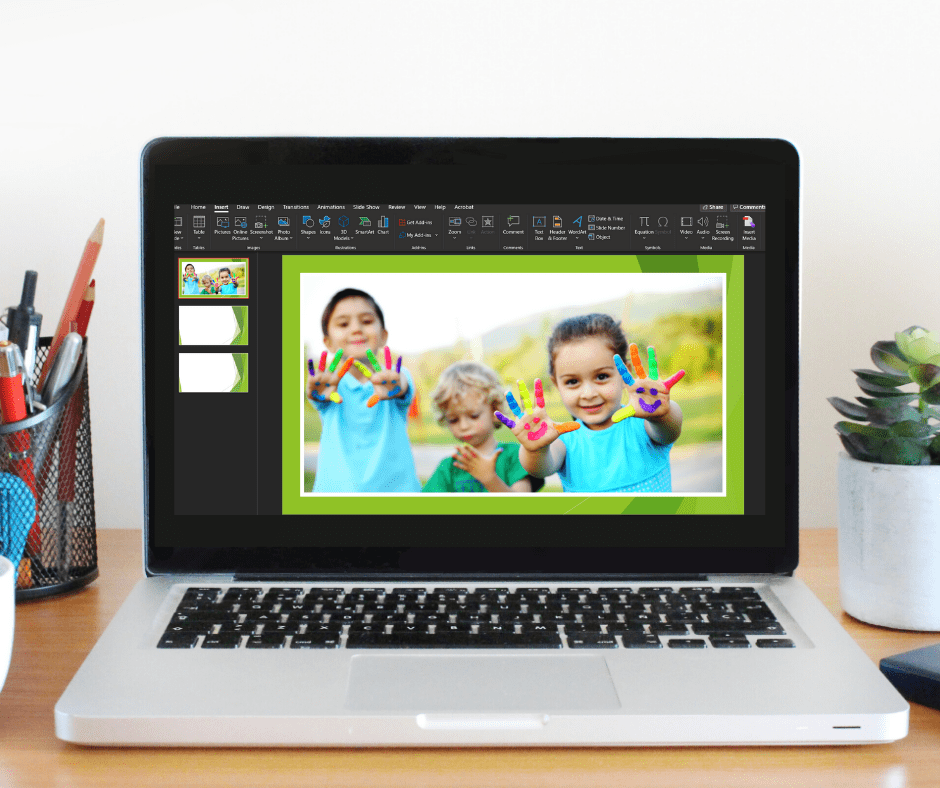
2. Children’s Memory Journals/Books
This reflection activity can be easily modified for different ages. Young children can simply add drawings or make marks and preschoolers through to school age can use both text and drawings to express feelings, opinions, memories and thoughts about their day.
Set aside a special calming time at the end of the day for children to access their memory books or journals and recount their day. For younger children, you might like to sit with them and offer some drawing prompts or just talk about how they felt about a certain activity or person that day.
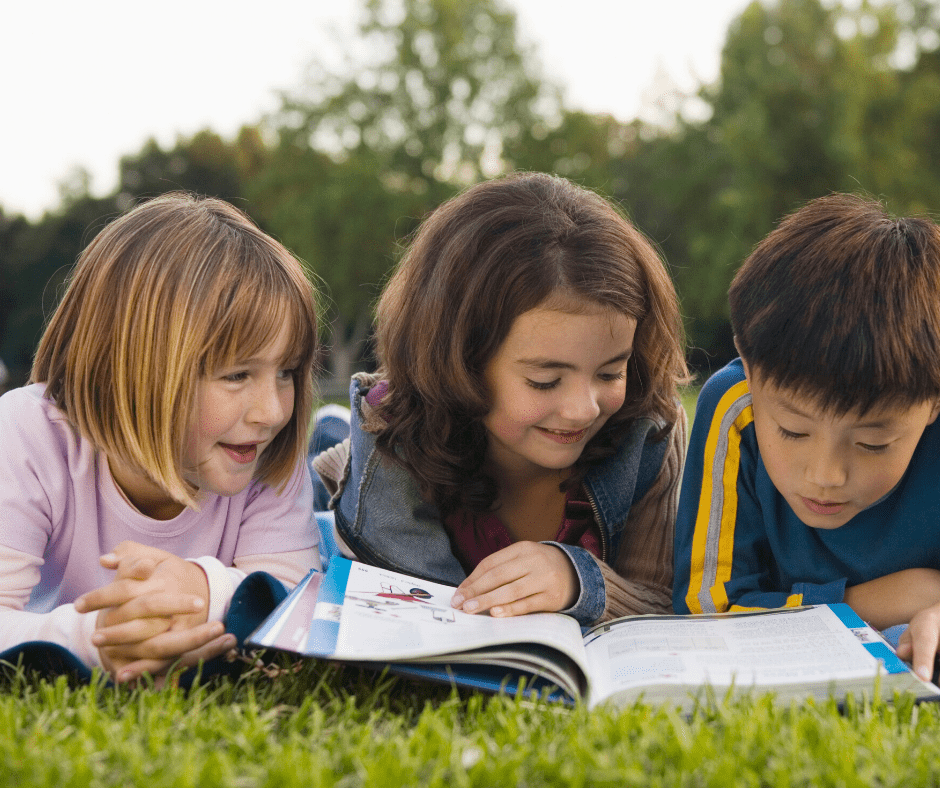
3. Group Warm Fuzzies
This one can be useful for both small and large groups with a little forward planning. I used to draw the outline of a teddy bear on some butcher’s paper and leave enough room on the tummy for children to write or draw then made copies… but you could use anything you have to hand, a large scrap of paper or cardboard will work just as well, no need to get fussy with it!

Sit in a circle with the paper in the middle and ask the children to write their name on the paper (you could also just do this yourself ahead of time if you wanted to). As you go around the circle each child chooses a name other than their own and gives a ‘shout out’ to that person. They are going to say something that person did today that they thought was nice or helpful or just friendly. Something that perhaps that person didn’t know made a difference. It can help get things going to start with the sentence ‘you are special today because you….’ Or ‘did you know you…….today’. It could be as simple as ‘picked up my pencil for me’, ‘smiled at me’ or ‘made me tea in the cubby’, ‘made me laugh’.
The idea is that everyone is going to leave for home feeling appreciated and acknowledged and reflect on what someone else saw that maybe they didn’t think about. I prefer to do this activity with 4 years old up or it gets a little time consuming and becomes adult led but please make a judgement on what you feel works best for the children in your group.
For the schoolies, you can make it a faster activity by just using the one sheet of paper and the children pass it around themselves. First child writes their name at the top of the paper then passes to the person on their right. That person takes a look at the name then writes the nicest or most positive thing they can think of about that person. They then add their name to the list and pass to the right again - continue until there is something written about each person in the group.
Now allow time for children to read what other children have written about them. Are they surprised, happy, confused, sad? Did they know they were appreciated or thought of in this way by others?
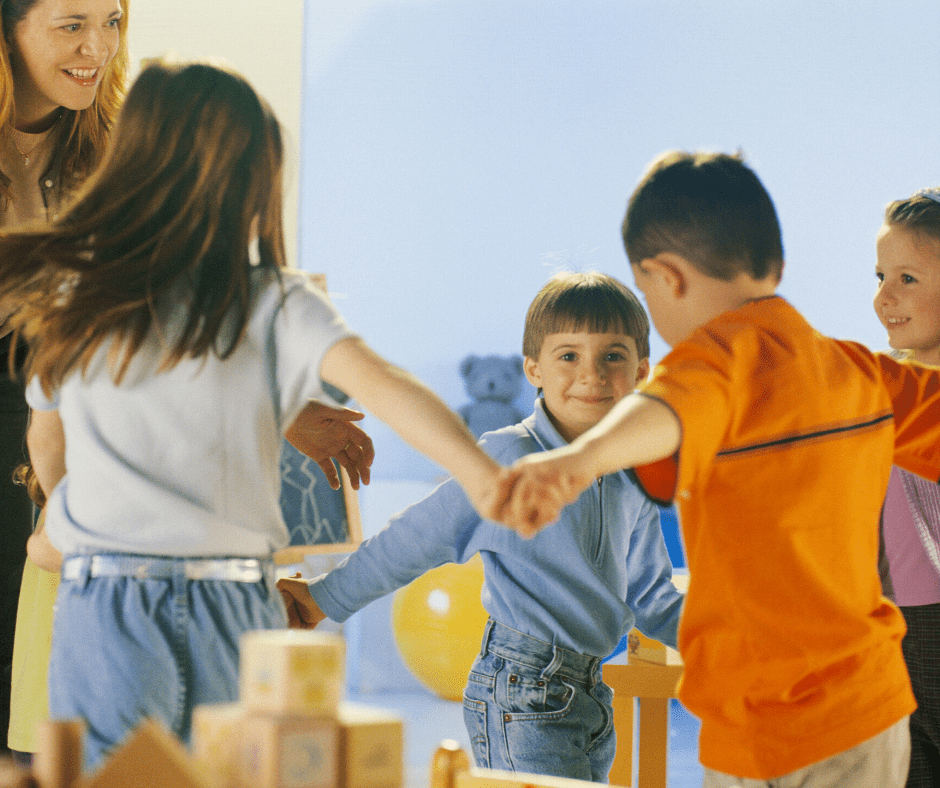
4. Emotion Story Cards
This game using emotions picture cards is an excellent introduction to simple self-awareness for toddlers and also children who are a little shy or not confident in their oral skills yet. (If you don’t have your own emotions cards you can download and print my set available in the resource shop here).
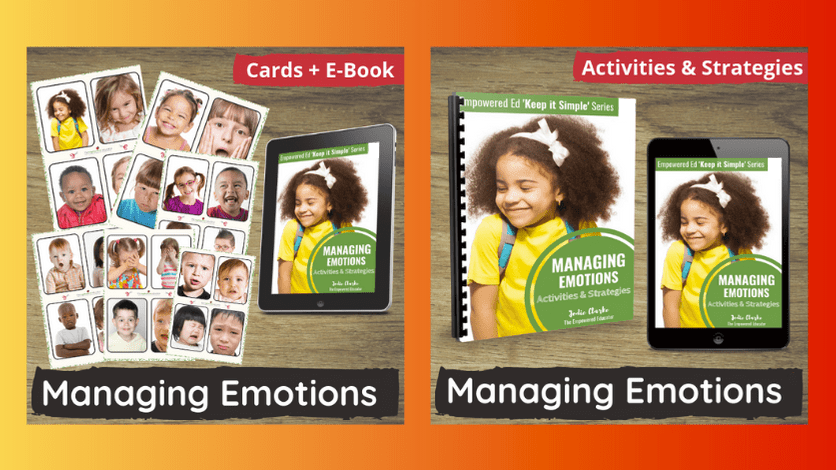
I would only start with 3 or 4 emotions cards at the most if doing this activity with toddlers otherwise they will become easily overwhelmed!
For older children, you could ask them questions about why they chose that emotion and why that activity made them feel that way. What would they change or do again? Ask the groups to brainstorm together and come up with other ways they could reflect on the day and tell you how certain events made them feel.
You could also just ask the children to call out some of the activities from the day and you write them down rather than using photos. Then choose 2 or 3 and use those with the emotions cards.
5. Our Day Sheets
If you share ‘our day’ type communication sheets with families at the end of a day similar to these ones but find it difficult to make the time why not turn it into an activity WITH the children. It’s a fantastic way to include the voices of the children and you might be surprised at what they choose to share - would you have chosen a different experience to share with the parents? Why do you think your perspective is different? Our Day sheets are an opportunity for both educators and children to reflect on their day!
Provide spaces on the sheet for younger children to draw pictures instead of always relying on photos and you can write in some short text summaries based on your own observations of the day as well as what the children are telling you.
Make sure to ask open-ended rather than closed questions. “Tell me what you found the most interesting to do today” “What was something new you learnt today?” There is also the opportunity to inform your forward planning and ‘where to next’ type discussions when you ask the children to extend on their answers “how else could we do this?” “What would you like to add to those blocks next week?” “Is there something about that activity you don’t want to do again, why?”.
Children might also choose to write about or draw pictures of ‘their day’ - you could provide a template with simple questions for them to reflect on and help them understand that challenges, mistakes and wins are all part of the learning process - they can always do something a different way or improve on a skill next time!
6. Sticky Note Walls
Sticky note reflections are not only quick and easy for busy educators they are fun for children to use as well! I find they work particularly well in outside school hours care environments and it makes it easier to include children from the before school session as well as the after school sessions. You can invite children to write about something they enjoyed, want to do again, didn’t like or something new they would like to see included in the program or environment.
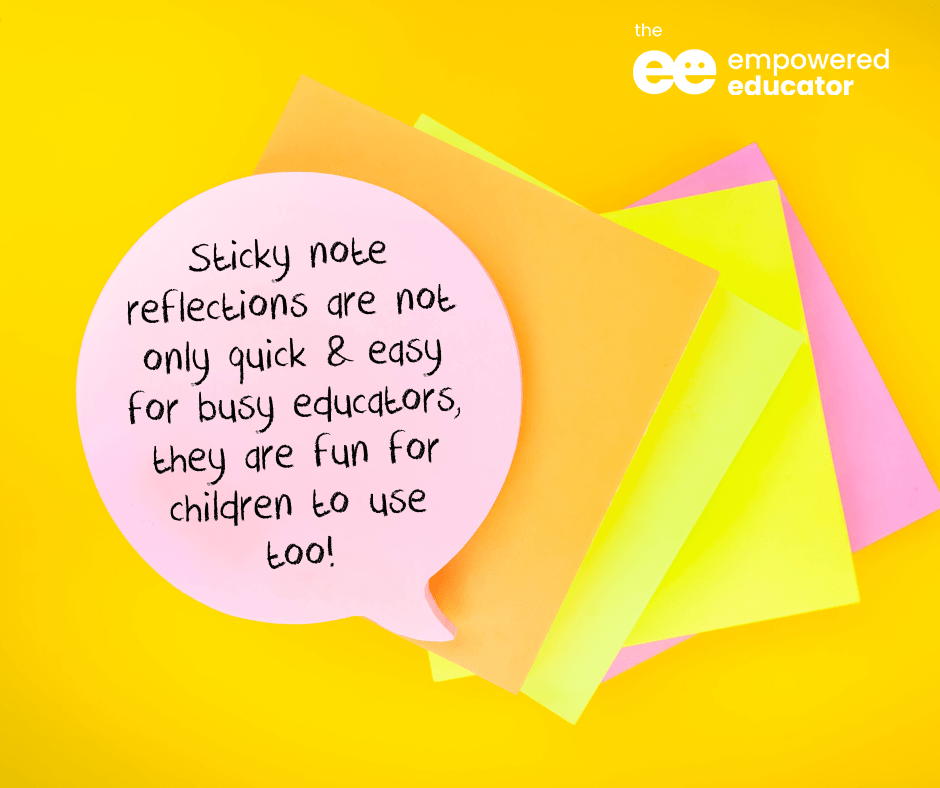
You can use them to directly inform your forward planning as well as a way to ensure the children have a voice in your service. If you are interested in how you could use them in your daily planning for OSHC take a look at my Daily Planners in the resource shop here.
If you have the space to leave them up as the week progresses you will have a fantastic child-led mural at the end of the week that uniquely describes the learning and fun that took place over the week. Make sure to take a photo for your own reflection records and to use in your next program.
7. Reporter of the Day
The 3-5 years age groups love this experience! Assign a reporter of the day to record the daily play experiences and events (if you are with a large group I would assign at least 3). Provide a range of materials they can choose from - digital camera, recording device, notepad, pens, a special scrapbook to write their story of the day or draw pictures to portray events.
Support the reporters to take photos or video record activities - you could ask them what they think the children are learning, why they decided to take a photo of this particular activity etc. You will probably need to take a role in narrating the learning they are reporting on or taking a photo of at first e.g “I can see Billy is taking turns with Sally to build the block tower higher”
Later that day you can look at the photos, drawings of reporter stories as a group and open discussions about what was happening, what they were learning, if anything surprises them about the photos and what they would like to do again or extend on. What do we need and how can we do that as a group? What did the reporter miss?

8. Theme Songs
Ask the children at the end of the week (or month) to choose ONE song that best reflects their past week. Talk together about thoughts, feelings, mood, relationships, why they chose that song and what line of the song they like best.
With younger children, I like to have a selection of some of their favourite songs ready to play and then they can shout out which song they choose for their week as they hear it played.
Even toddlers can tell you why they like a particular song or how it makes them feel when they hear it so don’t dismiss them as too young for this activity! Encourage them to move to the music and express themselves through body movements as well instead of relying on language.
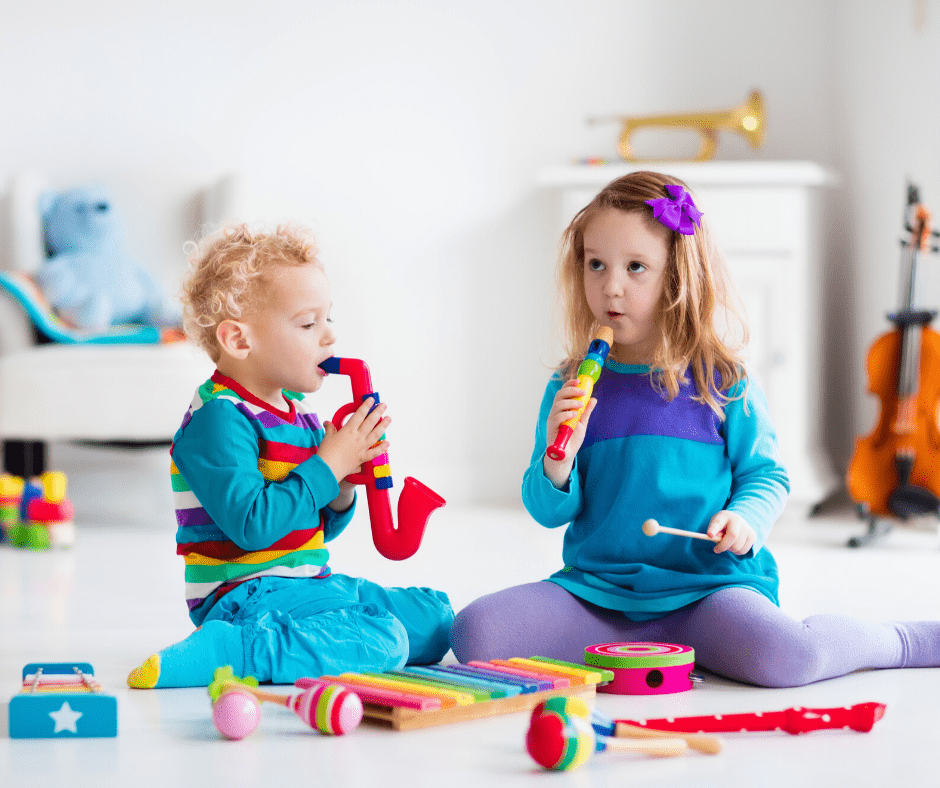
What activity does this song remind them of?
What activity would they like to do next week with this music playing?
9. Environment Engineering
This one is very simple but a powerful way to give children the opportunity to have their voices heard, create ownership of the spaces around them and how it makes them feel and explore what works, what doesn’t, why that is and how they could make changes.
At the beginning of each month include some time in your program (across the first week to ensure everyone has the opportunity to participate) to sit down with the children and ask what they like in the room at the moment (you can do this in the outdoor environment as well).
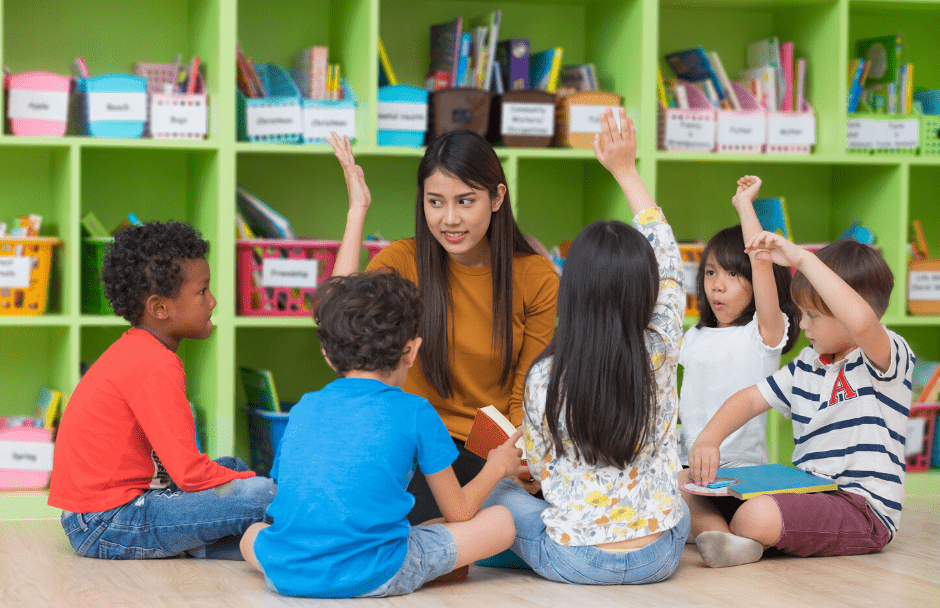
What would they like to move, remove or add to? Why?
Is there something they feel is missing or not working well?
Add thoughts to paper and display on the wall down low so children can add thoughts, drawings and suggestions as the week progresses. During the following week, you can work together each day to make some changes, rotate toys and move furniture - of course not all of the children’s suggestions will be feasible but make sure to explain why that is and ask for alternate suggestions.
Doing it gradually over a few weeks and giving children the opportunity to be a part of the process offers many pathways to further reflection and self-awareness…. while also telling them that they are important, this space is theirs and they have a role and responsibility in maintaining it.
10. Program Participation & Children’s Planning Time
This is very similar to the Environment Engineering experience above but this time you are working on the program and you want the focus to be on trying new things.
Depending on when you usually put up a new program, make time to ask the children each week what they would like to add to next week’s activities or routines. You could call it ‘Children’s Planning Time’ or similar - the idea is that we want to encourage autonomy, reflection on previous learning and play experiences and input into their ‘next steps’.

It can be as simple as asking them what they would like to do and why, what they think they could learn from that experience or how they could set it up… then if it is possible...add it to your plan with a ‘children’s choice’ label.
Set aside some time at the end of the ‘children’s planning’ session to review learning from the previous week’s planning together and help children to ask reflective questions of their own.
11. Favourite Place Race

This movement activity is best played near the end of the day before everyone starts going home and is a good one for toddlers as it is very easy. Ask each child to go and stand in the place they felt most happy today - indoors or outdoors. Ask why it made them feel happy - calmer, relaxed, busy, heard etc. Record their answers for your forward planning and your own reflection.
12. Monthly Survey
You can create simple visual surveys to invite children to share their feedback about different things important to them. I would use these as more of a monthly reflection tool or halfway through a year - not as a weekly event as they require more time to set up and evaluate.
You need to ensure you are creating a survey format that is inviting to children and easy for them to add their thoughts stimulate thinking about different events - think about the information you would find useful to receive... then what type of questions you could ask.
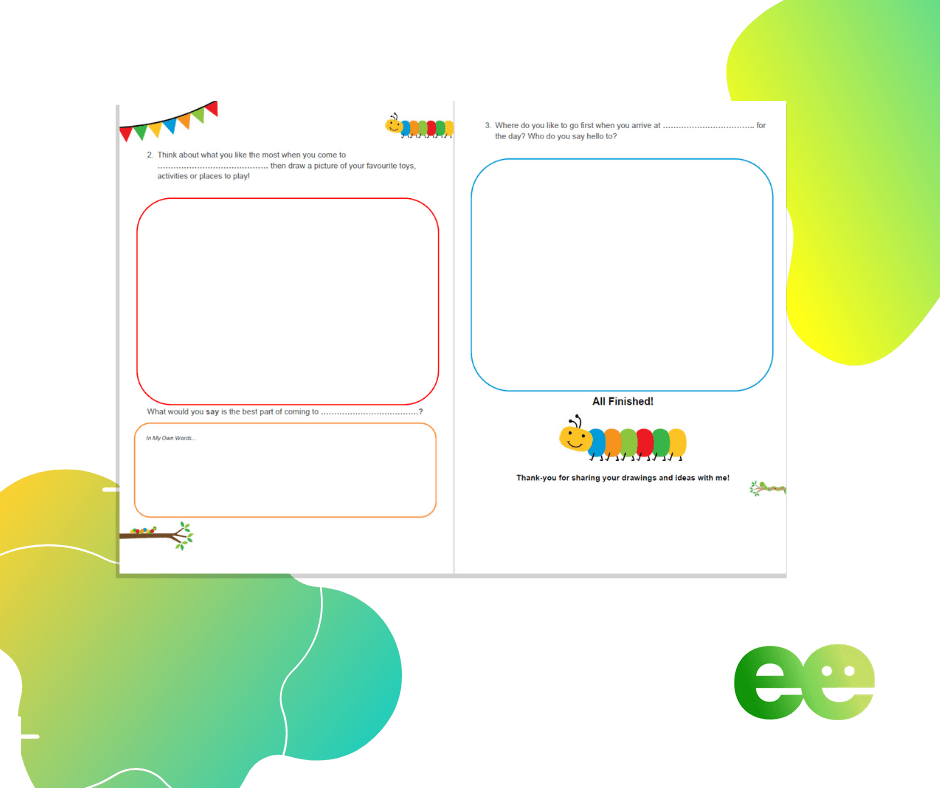
I often use a few simple questions the parent can ask their child then record the answers for them e.g "What don’t you like about going to ______” and “What is the best thing about going to_____” I also incorporate simple questions with space for children to draw their answers or share their thoughts - there are lots of strategies to create surveys for different ages. If you are one of our Member Hub subscribers I have already created a child survey template for you to edit and modify to suit your service needs - there is a version for FDC and also one for centre-based educators. You will find it in your ‘Getting Organised’ page inside Member Hub when next logged in here.
You can also read more about how to create your own survey in this previous blog post.
13. Weekly Photo Survey
Another simple way to capture children’s voices and reflections through surveys is by using photos.

If this takes too much time for you to organise each day why not try doing it as a start of the week activity and leave the photos from the previous week on the wall for children to add their photo to on the days they attend. Collect photos from the current week to display for next week’s survey.
Try to incorporate some time to chat with the children about their choices, what they might want to change for next time or if they would like to choose more than one of the activities. Talk about the results of the survey with the children and what they think that shows or tells us.
14. Vlog Reflections
This one is better suited to school-age children although some preschoolers will also be able to take part with some extra educator support (but it will be more time-intensive for you as the educator- perhaps it might work as an end of the month group video reflection project instead!). A Vlog is essentially just someone recording their thoughts and images on video - a little like this blog… but on video!
After a larger project or focus activity, you could provide children with access to video recording (a phone works well - no need for a fancy video camera!) and set them up to record their own ‘vlog’.

Give the children some guiding questions or prompts like the following examples to help them get started reflecting and expressing their thoughts:
They might also choose to include some photos of their project, group or finished artwork.
Children will often feel more confident and share more about their actions and work if they are just speaking and recording a video instead of worrying about and focusing on spelling, neatness of writing and grammar so this medium of reflection can be a more inviting and engaging tool for school-age students...and ultimately allow for more open communication and learning.
15. Yarn Time
For a very simple form of reflection set aside some time to sit down together near the end of the day and ask the children what they enjoyed about the day and what they would like to do next time they visit. Use open-ended and ‘I wonder…’ questions similar to the ones I’ve shared throughout this article to guide the children to think about their day, their feelings and what they have learnt.
Some educators like to use a stick or ball that the children can pass around the circle to keep it a little more active and engaging. Think about how you can use the information and perspectives the children are sharing to inform your ongoing planning and extension activities.
It might surprise you to hear how the children would like to extend their own learning or interests and the ideas and activities they come up with to do this!

16. Reflection Story Cards
To help make children’s thinking more visible while at the same time promoting and embedding deeper learning you could use some simple Reflection Story Cards similar to these ones or create your own on some cardboard.
Introducing opportunities for ‘thinking’ or ‘reflection’ stories into your day to day program isn’t time-consuming or difficult to set up. As another bonus..you can also easily modify for different age groups based on the prompts and questions you ask.
Use my reflection story cards to introduce opportunities for children to engage in reflective thinking in small groups... while still being part of a fun activity!
They are a way to invite thinking and work very well for those children that might be a little shy about expressing their thoughts or participating in a larger group in front of everyone. The cards give children a simple one-word prompt on each, for example, See, Think, Wonder. Now they can begin creating their story together by asking questions, listening to others and looking around them. They are thinking about their ‘thinking’!
Under each one-word prompt, you would include a very simple question for that card (or invite older children to ask their own).
For example, our first card might say ‘SEE’ and underneath that, you might write “What do you notice?”. Now the children take the lead and choose something that stands out to them...they then progress to the next story card in their sequence…. ‘THINK’ which asks the question...What do you think is going on? After adding to their story using this prompt (keep it engaging by providing paper, drawing tools, glue sticks, magazines, scissors, cardboard, loose parts materials etc) they can then move onto the last story card ‘WONDER’...What does this make you wonder?
The children might like to turn their ‘thinking story’ into pages in a book using the pictures, text or artwork they have created that they can keep adding to over the year as they explore more reflection stories (educator help will probably be needed with this depending on ages).
Reflection story cards are a great way to help children make their thinking visible to themselves and others and they also provide educators with a wealth of information to help inform future planning and create learning experiences based on the children’s current level’s of understanding, any challenges that arose and how to further extend a child’s individual learning journey.
Not every child will want to participate in these various self-reflection activities and that’s ok! There is absolutely no need to pressure young children into taking part in these activities - the idea is to have a few experiences ready in your toolbox so you can offer access regularly to all children in your care.

“We want to offer children every opportunity to feel they BELONG in their space. .”
Jodie Clarke - The Empowered Educator
This ensures that even those children who don’t choose to participate in certain activities feel like they have been respected and offered the right to be heard and included. We want to offer children every opportunity to feel they BELONG in their space.
What strategies do you use to gain insight into what is important for the children in your care?
How do they contribute to your ongoing program through opportunities for reflection?

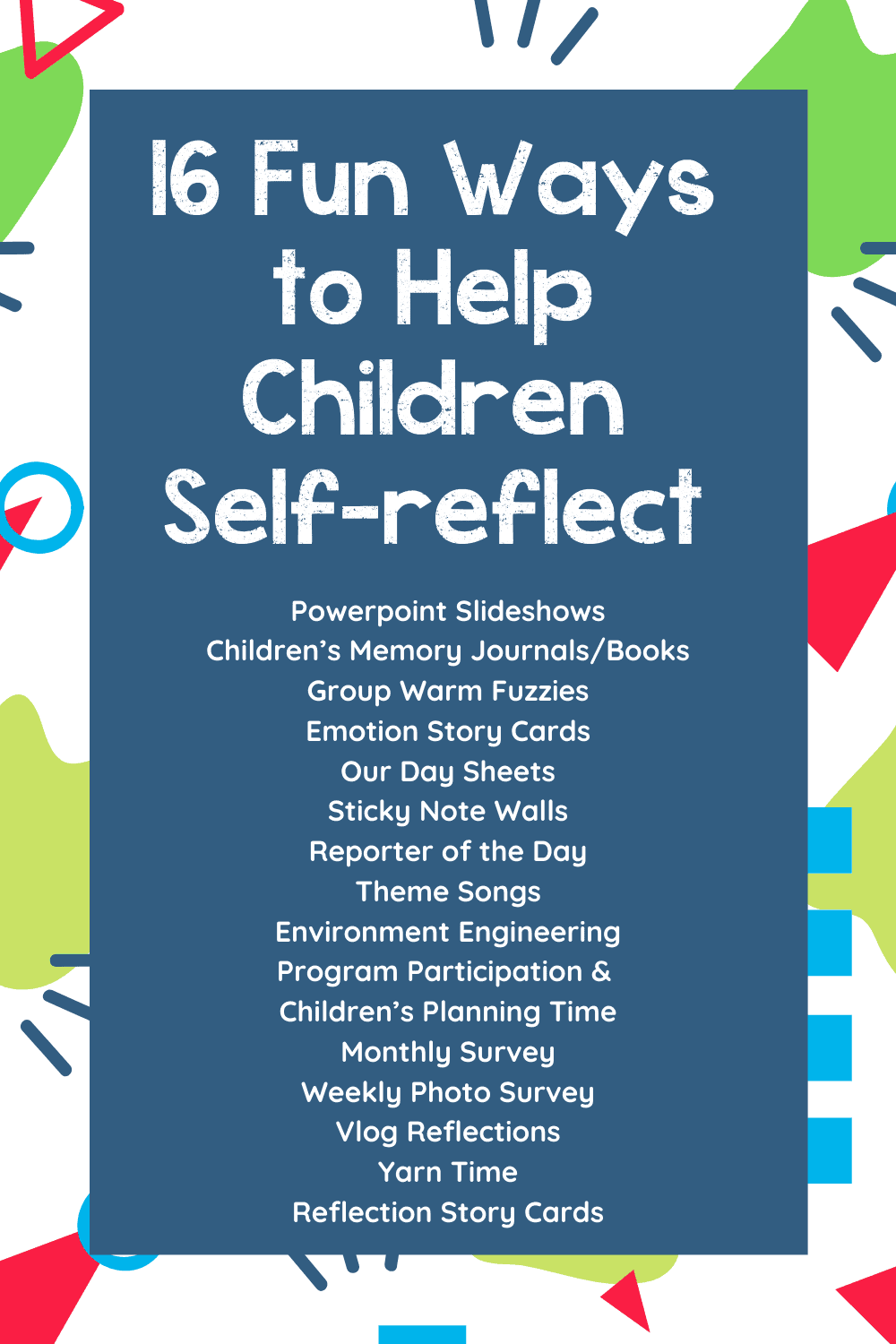
A Little About Me
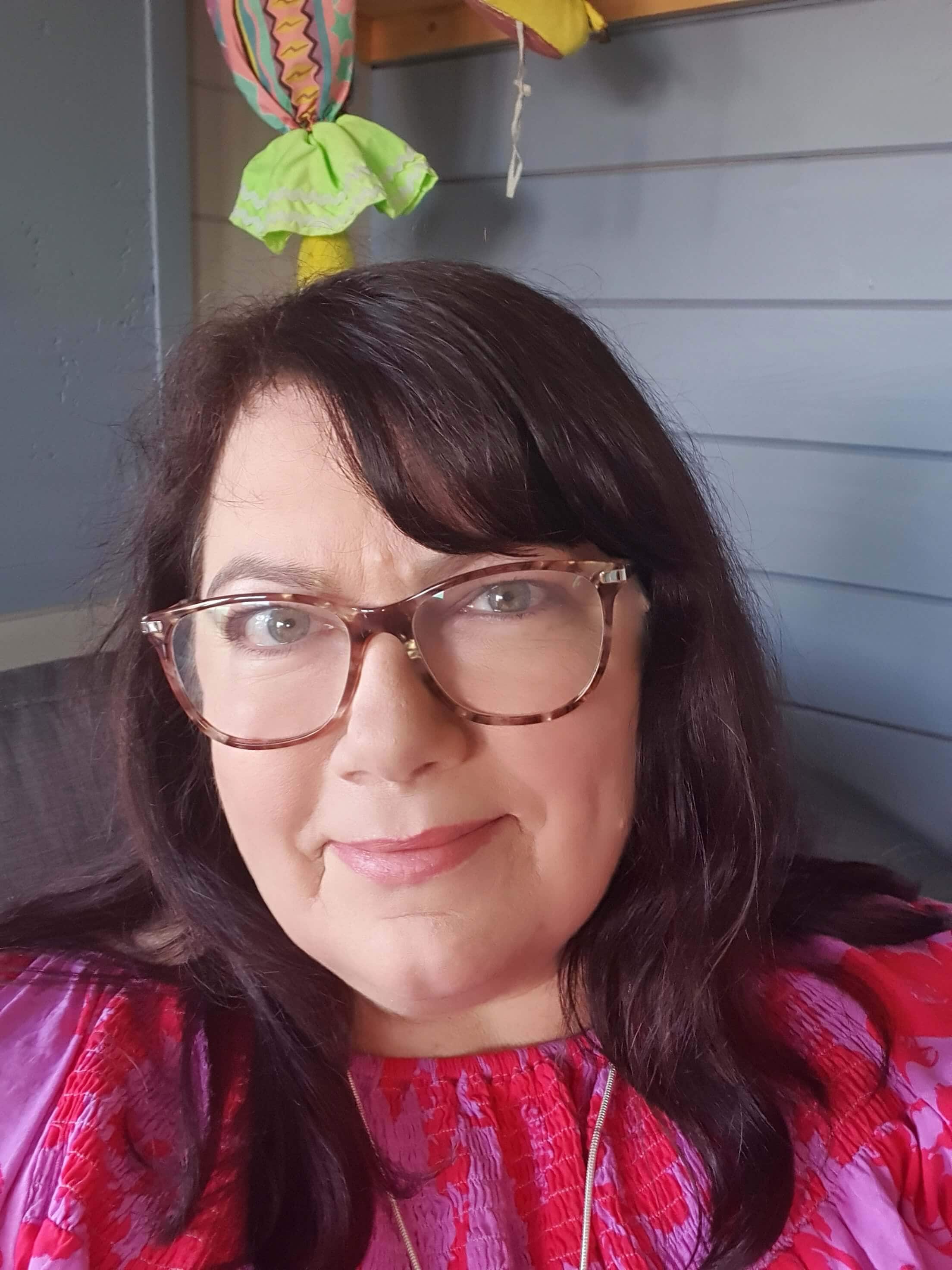
Jodie Clarke is an early childhood professional supporting educators who want and need to stay passionate about the work they do! She has 30 years hands-on experience in the early childhood and human services sectors across many different roles.
Jodie is mum to 3 in Australia and has already helped thousands of educators with their work through her popular blog posts, activity ideas, online training and e-books.

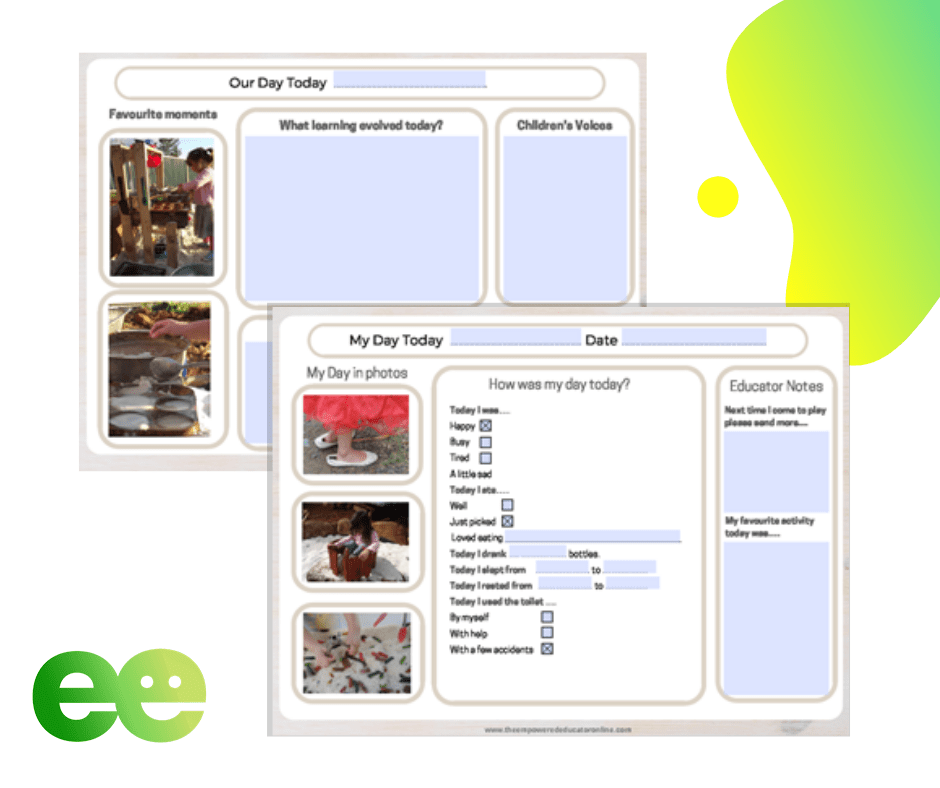
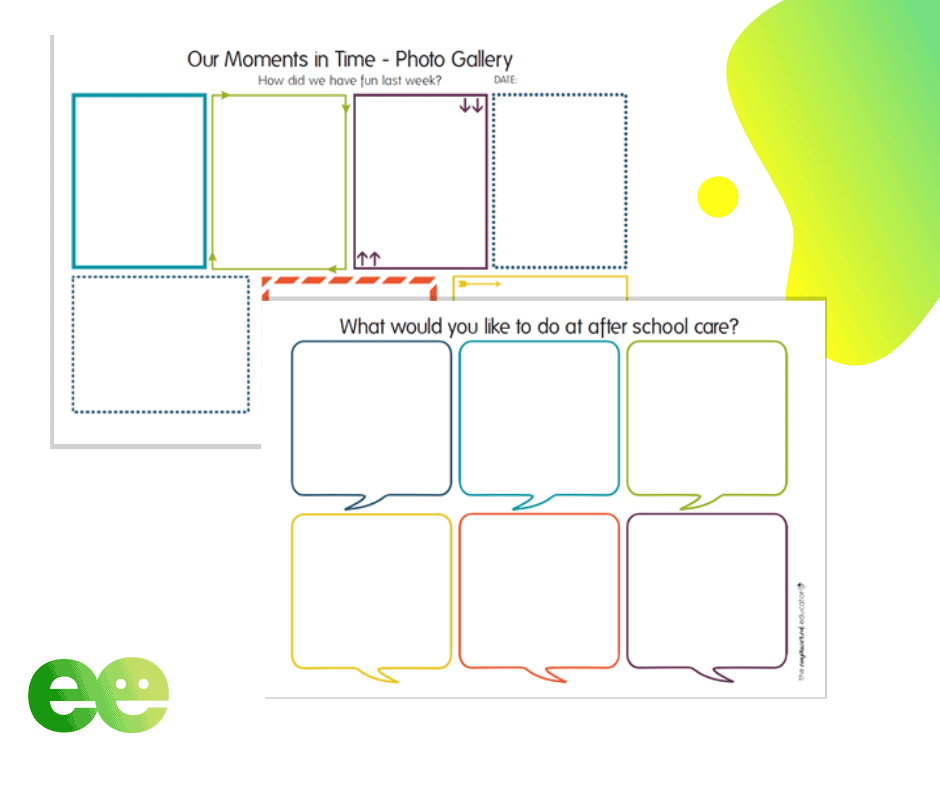

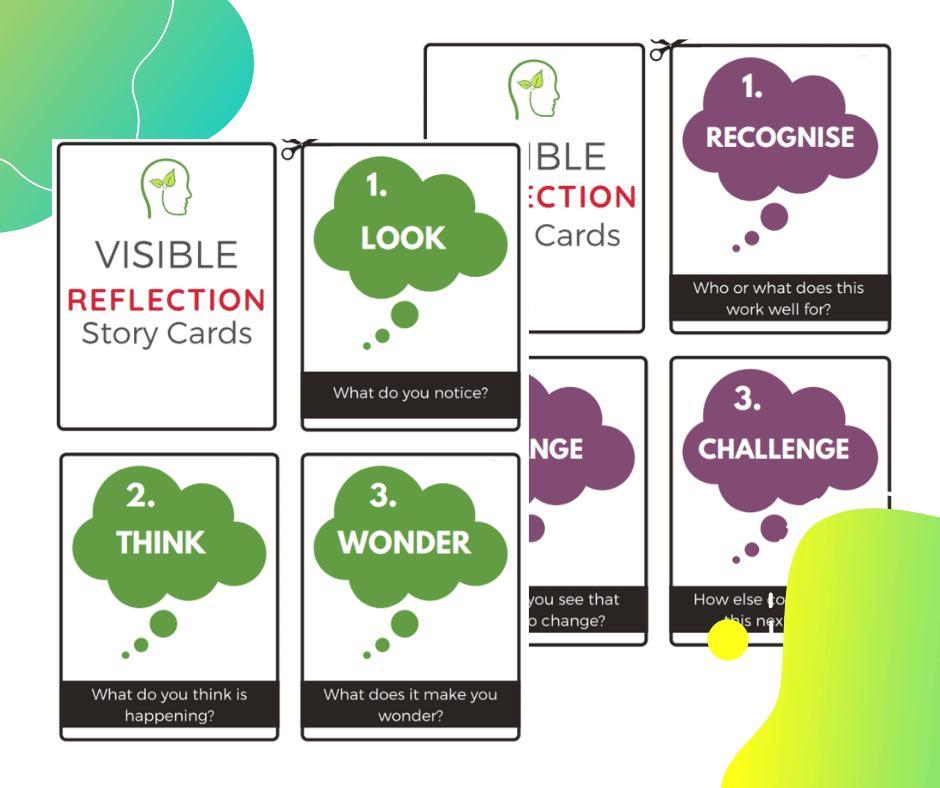
Really well done Jodie. These activities are great ways to give students a voice in their learning.